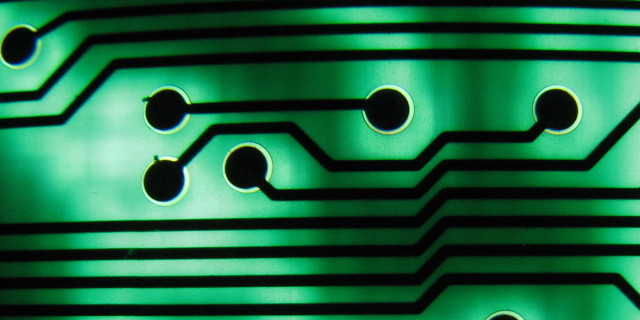

Our program consists of 5 research areas.
 Networking and Management research area aims solve technical issues which are important for the IoT above the physical networking layer. The important architecture issues include the infrastructure for device bootstrapping, end to end connectivity, monitoring and control capabilities. Also, in the research area we consider the infrastructure for network management and configuration, security, and object identification and discovery. These key technology areas are also key enablers for many of the future IoT applications. Besides new technologies, the application and integration of existing technologies in certain application scenarios will also be evaluated. As the area addressed by the research area touching a wide area of different technologies the work is divided further in to several tasks inside the research area with common theme that how the end-to-end connectivity can be achieved and managed above the physical layer. This thinking is based on the business value that there is a need to build trustworthy and reliable communication services.
Networking and Management research area aims solve technical issues which are important for the IoT above the physical networking layer. The important architecture issues include the infrastructure for device bootstrapping, end to end connectivity, monitoring and control capabilities. Also, in the research area we consider the infrastructure for network management and configuration, security, and object identification and discovery. These key technology areas are also key enablers for many of the future IoT applications. Besides new technologies, the application and integration of existing technologies in certain application scenarios will also be evaluated. As the area addressed by the research area touching a wide area of different technologies the work is divided further in to several tasks inside the research area with common theme that how the end-to-end connectivity can be achieved and managed above the physical layer. This thinking is based on the business value that there is a need to build trustworthy and reliable communication services.
This research area is tightly coupled with trials and demonstrations suggested in the research area Trials and Demos, and a large set of the results developed in this research area will be demonstrated in that research area.
 The work in this research area focuses on developing totally new as well as enhancing the existing radio communications and networking technologies to meet the challenges of massive IoT/MTC deployments in the coming years. When billions of devices are connected to the Internet, to form the Internet of Things, the first major challenge is to enhance the basic wireless connectivity and networking layers to handle such large numbers of coexisting devices. In the most ambitious scenarios, there can be up to million connected devices per square-kilometer, which simply cannot be handled by the existing wireless systems. The second main challenge is to substantially improve the energy-efficiency of the adopted radio communications and networking methods, compared to existing ones, as many of the end nodes in various IoT/MTC applications are heavily limited in power. In general, the work in this research area covers further development and enhancements of existing wireless systems, such as 3GPP LTE/LTE-Advanced and GSM/GPRS networks, and IEEE 802.11ah technology) as well as developing new complementary radio access solutions, such as the so-called cellular IoT concept, to meet the above challenges.
The work in this research area focuses on developing totally new as well as enhancing the existing radio communications and networking technologies to meet the challenges of massive IoT/MTC deployments in the coming years. When billions of devices are connected to the Internet, to form the Internet of Things, the first major challenge is to enhance the basic wireless connectivity and networking layers to handle such large numbers of coexisting devices. In the most ambitious scenarios, there can be up to million connected devices per square-kilometer, which simply cannot be handled by the existing wireless systems. The second main challenge is to substantially improve the energy-efficiency of the adopted radio communications and networking methods, compared to existing ones, as many of the end nodes in various IoT/MTC applications are heavily limited in power. In general, the work in this research area covers further development and enhancements of existing wireless systems, such as 3GPP LTE/LTE-Advanced and GSM/GPRS networks, and IEEE 802.11ah technology) as well as developing new complementary radio access solutions, such as the so-called cellular IoT concept, to meet the above challenges.
The work in this research area is strongly contributing to 3GPP and IEEE standardization, primarily through industrial partners. On the academic side, the work in this research area has resulted in large number of high-impact scientific publications in different scientific conferences and journals of the field.
 The research area of services and applications development support is a key enabler for the IoT. The current verticalization of IoT solutions limits the development of innovative services and applications. Our experts are working towards breaking this verticality with more horizontal interactions between IoT actors. Consequently, our consortium have addressed these challenges by developing solutions for semantic integration and analysis of IoT data, collaborative data gathering and fusion, data transportation and an IoT platform integrating these solutions.
The research area of services and applications development support is a key enabler for the IoT. The current verticalization of IoT solutions limits the development of innovative services and applications. Our experts are working towards breaking this verticality with more horizontal interactions between IoT actors. Consequently, our consortium have addressed these challenges by developing solutions for semantic integration and analysis of IoT data, collaborative data gathering and fusion, data transportation and an IoT platform integrating these solutions.
Our experts provided key results in this research area including many key research publications in top journals and conference venues, an IoT solution platform recommended by the IEEE Internet of Things technical community as first candidate platform for IoT solutions in city tagging scenarios (http://iot.ieee.org/iot-scenarios.html?prp=6) and the release of an open-source IoT platform to enable the interoperability of IoT solutions (https://github.com/uh-cs-iotlab/kahvihub).
 This research area concentrates on end-user aspects. IoT enables tangible and ubiquitous interaction between people, objects, locations and services. Our first focus is on co-creation and validation of IoT user interfaces. Interactive environmental aware IoT services will be develop for home and car environments. Usability and security of IoT services will be studied, with special focus on parental control and location learning and sharing. Finally, visualizations will be developed for company cases and these visualizations will be evaluated.
This research area concentrates on end-user aspects. IoT enables tangible and ubiquitous interaction between people, objects, locations and services. Our first focus is on co-creation and validation of IoT user interfaces. Interactive environmental aware IoT services will be develop for home and car environments. Usability and security of IoT services will be studied, with special focus on parental control and location learning and sharing. Finally, visualizations will be developed for company cases and these visualizations will be evaluated.
 The Research Area Pilots and Demonstrations turns the scientific and technical results produced by other Research Areas into services and products bringing out the benefits and potential of IoT. The results underline the wide range of industries, business domains and public services, which will utilize IoT in the near future for improving existing products and services as well as creating totally new ones.
The Research Area Pilots and Demonstrations turns the scientific and technical results produced by other Research Areas into services and products bringing out the benefits and potential of IoT. The results underline the wide range of industries, business domains and public services, which will utilize IoT in the near future for improving existing products and services as well as creating totally new ones.